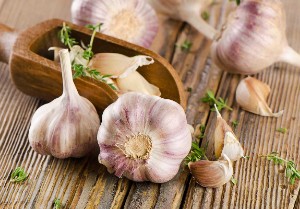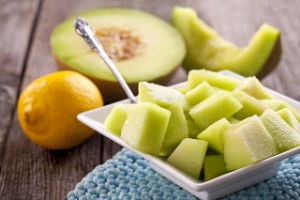How ginger affects the liver — 5 facts about its benefits and possible harm
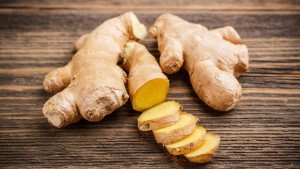 Ginger is a favorite plant of oriental doctors. It is used to treat a huge number of pathologies. It is also widely used as an aromatic seasoning in cooking, added to pastries, drinks, sweets, hot dishes and side dishes.
Ginger is a favorite plant of oriental doctors. It is used to treat a huge number of pathologies. It is also widely used as an aromatic seasoning in cooking, added to pastries, drinks, sweets, hot dishes and side dishes.
Modern research confirms that ginger has hepatoprotective properties, that is, it protects the liver from toxins and other harmful substances.
But despite all its benefits, ginger can be harmful. This is especially true for people who suffer from pathologies of the liver and other digestive tract organs. Ginger is also prohibited in the presence of certain chronic diseases.
Therefore, the use of ginger in any form should be discussed with your doctor, and its use as a medicinal component should be considered. In this article, we will only describe its benefits and potential harm in general terms.
Content
5 useful properties of the root vegetable
The reasonable use of ginger for therapeutic purposes can have a positive effect on the digestive tract and liver. The root of the plant has the following effect on the body:
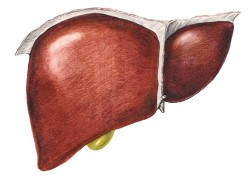
- Prevention of the development of hepatosis. One of the functions of the liver is the production of bile. It is bile that dissolves fat deposits in the duodenum. Ginger is able to enhance this function, thereby normalizing fat metabolism and, as a result, protecting the liver from the development of fatty hepatosis;
- Anti-inflammatory effect and detoxification. Ginger is a natural antidote for toxins of various origins. That is why it is good to use the root for food poisoning. The active anti-inflammatory effect will help to overcome harmful cells and relieve the symptoms of poisoning;
- Fight against alcoholic hepatitis. Quite often, the rhizome is used as a detoxification agent for hepatitis of alcoholic origin. The plant is good cleans the blood , disinfects, removes toxins from the body, strengthens the general immune system, improves tone.
- Improvement of blood flow, strengthening of blood vessels. Perhaps the most famous therapeutic effect of ginger root is normalization of blood supply and strengthening of vascular walls .
- Oxygen saturation. The plant is also able to saturate the liver with oxygen, which, coupled with good blood flow and with strong vessels protects the kidneys, pancreas, gallbladder and heart from the development of pathologies;
Negative impact
Negative effects of ginger:

- Activation of blood flow. For some it will be more of a benefit, but for people with poor blood clotting ginger can be a false companion. Its active ingredients increase the rate of blood flow and can cause bleeding;
- Increased stress on the heart. This item is directly related to the previous one. If you have heart pathologies, then an increase in blood flow will lead to increased cardiac load and, as a result, to an exacerbation of diseases;
- Exacerbation of gastrointestinal problems. The spice is quite burning and sharp and can lead to irritation of the sensitive mucous membrane of the pancreas or stomach. This, in turn, will result in stomach ulcers, gastritis, pancreatitis, heartburn or indigestion;
- May worsen inflammation. In some inflammatory processes, the use of ginger can lead to complications and deterioration of the condition. Therefore, it is necessary to use the root very carefully for inflammation of various etiologies;
- Is a strong allergen . Ginger root is a strong allergen that can cause an allergic reaction not only in people who are prone to food allergies, but also in people who have not previously noticed a tendency to side reactions of this kind.
How to take it — 2 recipes
If you have no contraindications, the root vegetable can simply be added to the bud as a spice. You can also eat pickled ginger. You can also try to experiment. Prepare ginger cookies or add a small amount of seasoning to the meat or side dish. Well, below we will look at 2 simple and popular recipes.
1. Ginger tea
Before using, carefully peel the root and chop it. To do this, you can use a knife or a large grater.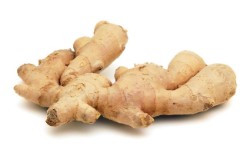
To make a drink, you need to take:
- 3 tablespoons of crushed raw materials;
- 1 cup of boiling water;
- Thermos or thermocup.
Put the pre-prepared raw materials in any brewing container (ideally in a thermos or thermocup) and pour boiling water. Infuse your tea for 10-15 minutes, then strain. To add flavor, add lemon and a little honey to the drink.
You can also make a fragrant ginger broth. To do this, you will need a fresh rhizome. Inspect the fruit before cooking: there should be no traces of rot, mold on it, the skin of the root should be smooth, homogeneous.
2. Cleansing tincture
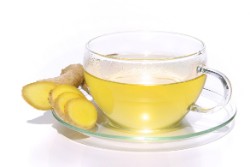 For treatment, you should brew ginger according to the following recipe:
For treatment, you should brew ginger according to the following recipe:
- Grate fresh ginger root on a fine grater;
- Pour 10-20 g of raw materials with boiling water, close the container tightly with a lid;
- Leave to stand for 10-15 minutes.
Before you start the process cleaning with ginger , it is necessary to consult with your doctor and take into account all possible adverse reactions and contraindications.
On the first day, you should take 10 drops of the infusion, increasing the dose by a couple of drops every day. As a result, you should reach the 40 drop mark. After that, continue to drink 40 drops daily for 15 days, then start lowering the dose (minus 2 drops every day). When you reach the mark of 10 drops per day, stop and take a fifteen-day break. After the break, resume cleaning (the cycle repeats).
In order for the liver to be gently and effectively cleansed, you will need 3 months. You need to drink the infusion in the morning on an empty stomach. You can not skip the reception! The infusion must be re-prepared daily so that it is sure to be fresh.
Is it possible to eat with liver pathologies?
Ginger is an ambiguous product for the liver. Many liver pathologies, including cholecystitis and hepatosis, cause frequent inflammation and exacerbations in the body, and in this regard, any spices, spices and spicy foods are prohibited.
Cirrhotic lesion
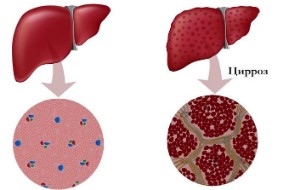 Many scientists have been trying for a long time to study the effect of substances contained in the root crop on cirrhotic liver damage.
Many scientists have been trying for a long time to study the effect of substances contained in the root crop on cirrhotic liver damage.
All experiments were conducted on mice that received a ginger slice in their daily diet for a month.
The results of the study showed that the degree of cell damage has decreased after all, what signals the possible protective properties of the root crop .
But the medicinal properties of ginger in cirrhosis have not yet been precisely proven, so it is worth refraining from using it with advanced cirrhotic pathology.
Fatty hepatosis
Hepatosis immediately causes a complex of irreversible changes in liver tissues. Liver cells in this pathology degenerate into fatty ones. It is also dangerous because it proceeds covertly, so it is not always possible to detect this pathology in time.
But fortunately, its development can be stopped if you go on a special diet and exclude the factors provoking the disease.
Some experts still allow the use of ginger in this case. Root vegetables can help by increasing the production of bile (which helps fight fat deposits). In fact, the root helps to improve fat metabolism , therefore , the process of degeneration of liver cells into fatty ones is suspended.
Related videos
We recommend watching this video:
Conclusion
Ginger, so beloved in eastern countries, really has a lot of useful properties. But, like any other spice, this root vegetable can have a negative effect on the body. Therefore, before adding this root to your diet, consult with a specialist and familiarize yourself with the properties of the spice.



